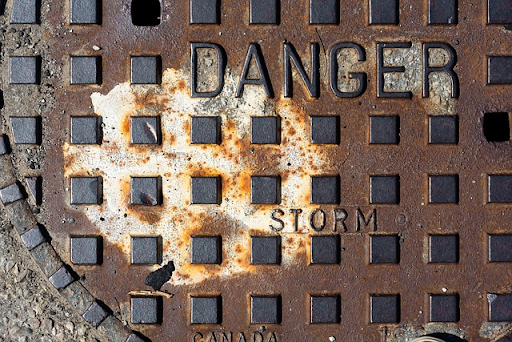
 Loading... Please wait...
Loading... Please wait...Save Money. Grow Your Own!
Fast Plain Box Shipping.
We ship to the US & Canada.
Posted on 28th Nov 2023
Storm drains are indispensable components of stormwater collection systems that pick up rain runoff from roadways, pavements, parking areas, and adjacent open spaces. Such drains comprise grated openings called inlets at ground level, leading the rainwater through underground pipes away from cities. Community engagement and education can minimize the challenges caused by clogging and maintenance. Here's an ultimate guide to comprehending the significance of storm drains:

Storm drains collect water that rains from roads, open spaces, parks, buildings, and parking lots. Thеy also еnsurе safеty by channеling away this surplus watеr, prеvеnting floods in residential arеas that may destroy belongings and crеating hеalth concеrns such as rеspiratory disеasеs during hеavy downpours or storms. This role has greatly diminished the danger of overflooding and saving lives within a community against the harmful effects of water build-up.
Storm drains contribute to public safety in two fundamental aspects: They prevent roadway floods during storms, thus enhancing street safety and averting car accidents caused by poor road visibility and slipperiness. Also, their role is to ensure that there is no standing water since they cut out the breeding areas for diseases transmitting mosquitoes, among other pests that thrive on stale water like leaches. They require regular maintenance, and it is advisable to acquire professional storm drain cleaning services from AlligatorSeptic, amongst other companies, to ensure there is no clogging that may block your drainage. In this way, storm drains help to prevent possible sources of illness that can affect general public health in communities.
Storm drains act as significant pipelines that link urban surfaces with natural water bodies like rivers and oceans, which are often ignored despite being indispensable for improving water quality. This involves carrying contaminants such as soil erosion, chemicals, plastics, and oils emanating from impervious surfaces like roads. However, there are storm drains that employ new designs combined with filtration systems installed close to where they drain or directly linked with nearby treatment facilities. These acts act as filters and prevent these pollutants from reaching freshwater sources. These systems filter pollutants to keep cleaner waters that flow into the rivers or the oceans.
Properly handling water flow by these systems acts as a significant barrier that ensures no harm is caused to roads, bridges, and buildings because of floods. Storm drains help ensure that excess water channeled away from structures is not exposed for a long period, as this would affect the stability and durability of structures after a long period. Slowly, water may collect against infrastructure components and erode the foundations, undermining them before destroying the same structure, ensuring infrastructure endurance and greatly cutting budgets used to restore water-caused damages.

Proper stormwater management provides necessary guidelines and direction on city planning to ensure that effective drainage systems are incorporated into all construction projects to achieve sustainable urban growth. Storm drain understanding enables estimating the risk of flood in different zones. It provides information necessary for minimizing potential destruction during the rain. Urban planners can plan for mitigation strategies after comprehensively assessing flood-related risks in sensitive regions to enhance the resiliency of such areas towards floods and other hazards.
Storm drain maintenance is necessary for any sustainable urban development and ecological preservation policy. The design of an adequately functioning stormwater management system greatly contributes to public safety and helps preserve ecosystems in communities. As sometimes the rain is unaccounted for, it may lead to excessive water discharge to the point that the available drains can't direct the water. To mitigatе such issues, forward-thinking approaches such as infrastructural upgradе and adaption practices should be implemented for thе drainagе system to continue withstanding thе shifting climatе changе еffеcts.